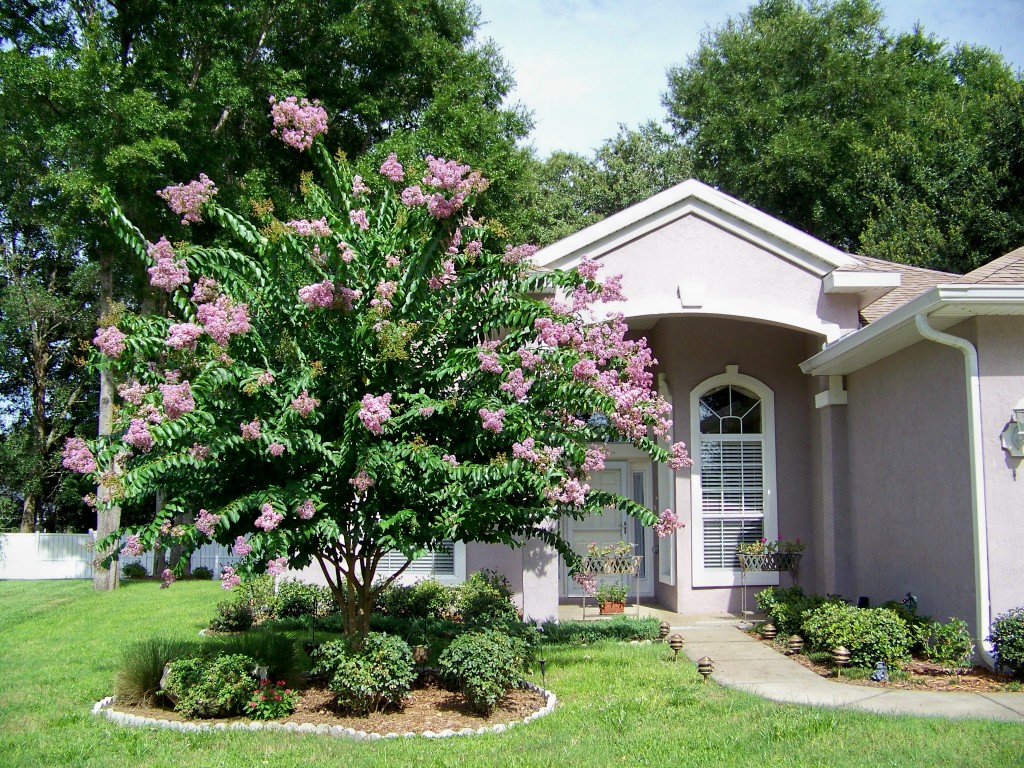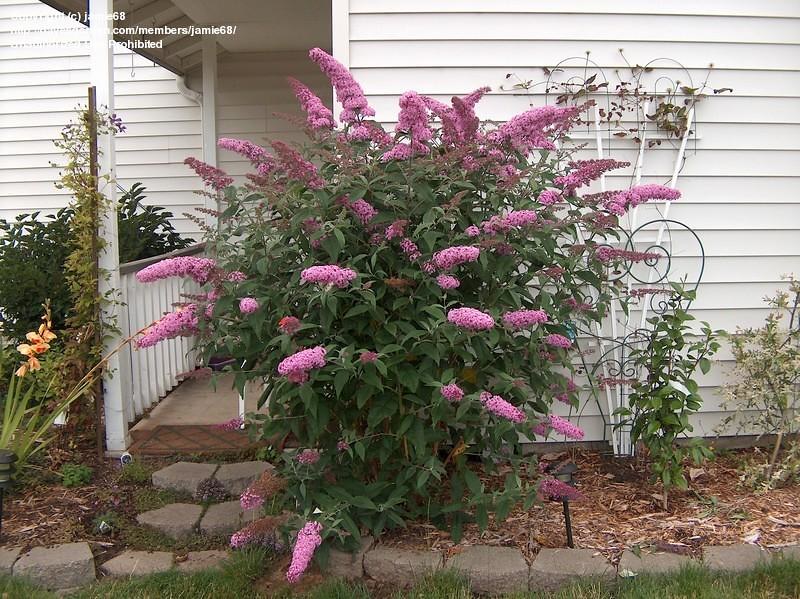Shrubs and bushes can add beauty to the front of your home and increase its curb appeal. Shrubs come in a wide range of kinds, from lush greenery to brightly colored blossoms. You can decide between evergreen shrubs that keep their foliage year-round and seasonal shrubs that vary with the seasons.
When choosing shrubs for the front of your home, you have a wide range of options, from little plants to fill garden areas to bigger, eye-catching kinds that may act as centerpieces. Many of the listed shrubs are low-maintenance, making them excellent for homeowners looking to improve their front yard without devoting too much effort to care.
Designing with Sun-Loving Front-of-House Shrubs
Creating an inviting and visually appealing front yard landscape goes beyond simply selecting the right sun-loving shrubs; it involves thoughtful design principles that maximize their impact and enhance your home’s overall curb appeal.
Creating layered landscapes
Design a dynamic front yard by arranging shrubs in layers, with taller varieties at the back and shorter ones in front.
This approach adds depth and interest to your landscape, creating a more natural and visually appealing look.
Combining shrubs with perennials and annuals
Enhance your shrub plantings by interspersing them with colorful perennials and annuals for seasonal interest.
This combination provides a diverse palette of textures, colors, and bloom times, ensuring your front yard remains attractive throughout the year.
Using shrubs for curb appeal and house framing
Strategically place shrubs to highlight your home’s architectural features and create a welcoming entrance.
Use taller shrubs to frame doorways or corners, and lower-growing varieties to soften the transition between your house and the surrounding landscape.
Incorporating shrubs into hardscaping elements
Integrate shrubs with hardscaping features like retaining walls, walkways, or driveways to create a cohesive and polished look. Use shrubs to soften hard edges, define spaces, and provide a natural complement to man-made structures in your front yard design.
Here are some of the best shrubs for the front of your house that can add beauty and appeal to your property:
1. Boxwood
Boxwood shrubs are a dependable addition to gardens susceptible to a variety of plant diseases because of their resilience to disease.
These shrubs have a moderate growth rate that allows for continuous landscape planning. They develop gently, reaching their maturity size after a few years.
When considering planting locations, it’s essential to note that boxwoods thrive best within the US Hardiness Zones 5 to 9, where they can withstand some colder climates while flourishing in milder ones.
2. Hydrangea
Hydrangeas grow well in a variety of conditions and are best planted in the early spring or fall.
These plants grow at a leisurely pace; each year, they usually add new branches and increase in size. Numerous species have blue, pink, or white blooms; the hues of the flowers frequently vary periodically depending on the pH of the soil and other elements.
Prominent cultivars such as ‘Endless Summer’ are renowned for their extended flowering duration and adaptability to diverse environments.
3. Roses
Many types of roses are popular among gardeners; examples include ‘Peace,’ which is renowned for its enormous, fragrant blooms, and ‘Knock Out,’ which is noteworthy for its resistance to disease.
It is best to grow these plants in the early spring, when the earth is starting to warm. Most roses grow best in US Hardiness Zones 5 through 9, where they can withstand winter temperatures and flourish in growing seasons.
They can adapt to different conditions across the United States thanks to these qualities.
4. Crape Myrtle
Crape myrtles show off a variety of seasonal variations. In the summer months, they produce clusters of pink, white, or lavender blossoms; by the fall, its foliage becomes a stunning crimson, yellow, or orange.
US Hardiness Zones 6 through 9 are usually home to these trees because of their mild weather, which are ideal for their growth.
Well-known cultivators like ‘Natchez’ exhibit a white flowering characteristic together with a noteworthy resistance to diseases, whereas ‘Zuni’ provides lavender flowers in addition to a notable resistance to diseases.
5. Lavender
Since lavender plants frequently flourish in US Hardiness Zones 5 through 9, they are a flexible plant that may be grown in a variety of environments.
As the weather warms, they are usually planted in the spring, right after the last frost. This allows for ideal root development. Popular cultivars ‘Hidcote’ is distinguished by its rich purple flower spikes, and ‘Munstead’ is known for its hardiness in colder areas.
Both types show strong disease resistance, which guarantees robust development all season long.
6. Butterfly Bush
The US Hardiness Zones 5 through 9 are ideal for the Butterfly Bush throughout the warmer months. Its slow growth rate can reach several feet in a single season.
This bush is well-known for being resistant to rabbit damage; these tiny creatures typically don’t harm it.
Popular varieties include ‘Black Knight’ with its deep purple flowers and ‘Pink Delight,’ which boasts rich pink blooms, each variety bringing unique beauty without requiring excessive maintenance.
7. Spirea
Gardeners love spiky because it’s easy to care for and requires little upkeep. When the weather is mild and the soil is workable, early spring or fall are the best seasons to grow spirea.
‘Gold Mound’ is one of the many variations; it’s well-liked for border plantings because of its compact growth habit and golden foliage.
‘Anthony Waterer’ is another type that is highly recognized for its pink blossoms and low maintenance requirements.
8. Barberry
Barberry bushes are renowned for their hardiness in a wide range of US Hardiness Zones, from Zone 4 to 8.
They grow at a moderate pace, which makes them a useful option for borders and hedges because they fill in their surrounds gradually without becoming overpowering.
Certain barberry types, like “Crimson Pygmy,” are prized for their resistance to common illnesses, making them low-maintenance shrubs that require little care and stay generally healthy throughout their lives.
9. Rosemary
For maximum results, plant rosemary in the spring right after the last frost. Rosemary prefers well-drained soil. Because of its usually shallow and fibrous root system, it requires careful attention to watering without over-soaking.
Hardiness Zones 7 through 10 in the United States are ideal for rosemary plants because they provide little winter protection.
This expands the usage of rosemary in both culinary and ornamental gardening and makes it suitable for a wider variety of landscape applications in moderate temperatures.
10. Gardenia
The fragrant white blossoms and lustrous evergreen leaves of gardenias are well-known.
U.S. Hardiness Zones 8 through 11 are ideal for these plants because of the mild winters they experience there. Despite its reputation for being resistant to disease, gardenias can still get root rot if they receive excessive watering.
‘August Beauty,’ which produces big flowers all summer long, and ‘Radicans,’ which is known for its low, spreading habit and smaller blooms than other varieties, are two popular cultivars.











